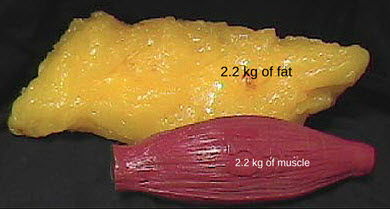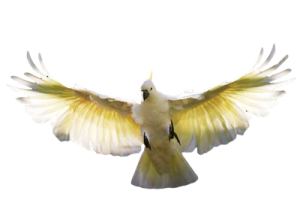Buying a Good Running Shoe
Comfort should be the main determinant when choosing a running shoe. Go for a dedicated running shoe, rather than a cross trainer. Cross trainers don’t have the appropriate cushioning and stability needed if you are running regularly.
The Best Brand
The best running shoe is the one that’s comfortable for you. Don’t be swayed by brand recognition, or the nice colours. Go on what feels comfortable. There are heaps of different brands, and a number of models in each brand’s range. Brands such as Asics, Misuno, New Balance, Brooks, Saucony and Fila all have good ranges of running shoes. If you have a broad foot, try New Balance, or go for a men’s shoe in another brand. Brooks are often recommended by podiatrists if you have orthotics, as they tend to be a bit deeper in the heel than other shoes,
Getting a Good Fit
Make sure you get a good fit with your running shoe. If there’s anything about the fit that you’re unsure of when you’re in the shop, I can promise you, it will be magnified once you’re out running.
Allow plenty of time to buy a running shoe. Don’t take anyone with you who will be impatient to get going.
A running shoe shopping expedition should definitely be a child free occasion.
Don’t be afraid to make the shoe sales person earn their keep. Try on as many shoes as you feel you need to, and ask as many questions as you like.
Do take socks that you will be running in, and any orthotics you might wear inside your shoes. You need to try your shoes on with these on board.
Shop after 4pm
Shop for shoes at the end of the day, when your feet are likely to be at their biggest. As your feet become hotter and more compressed when you spend time walking on them, they will usually be half to one shoe size bigger at the end of the day. When you run, the heat and compression will have the same effect.
Buy bigger than your dress shoe size
Be careful to buy shoes that are big enough. You should have about a thumb’s width between the front of your shoe and your longest toe (not necessarily your big toe) when you are standing on that foot – you therefore wont be able to test this properly yourself. You should be able to play the piano with your toes. Overall, running shoes should be a looser fit than dress shoes, and you’ll probably find you’re at least a half size bigger in running shoes. Width wise, the shoe should not feel tight, but nor should it feel uncomfortably loose.
The heel
The heel should fit snuggly into the shoe, but it should not be too tight. You should be able to slip the heel out of your shoe when it is laced up, but not tied. When you tie your shoe, use the heel lock technique, which will help to make your heel secure in the shoe. You’ll feel a bit of heel movement, but not too much.
Try It Out
Running in the shoe before you buy it is super important. The shoe could feel very different when you’re running to how it feels when you are standing still. Ideally, the shop will have a treadmill to run on, or you’ll be able to run outside in the shoe. If not, make sure your run around the shop – don’t worry – the other customers will be impressed that you look like you know what you’re doing. If possible, run downhill, but if not, stab the ball of your foot into the ground, and see how much movement there is – if your toes hit the front of the shoe, try re-lacing, but it might mean the shoe is not the right fit.
How Much Should You pay?
Don’t scrimp, but do buy within your budget. A more expensive shoe is not necessarily going to be a better fit for your foot. I always start at the cheaper end of the range first, and work my way up if I need to.
Beware The Sizzle
Some running shoe stores will pop you on a treadmill and look at you run, before advising you on a shoe. This is a great way to figure out what might suit, as long as the shoe salesperson knows what they are doing. In the nicest possible way, you should sus out if they know what they are on about – ask them what they are looking for, how long the store has had the equipment etc. Sometimes these things are lots of sizzle without much sausage. The same goes for heat sensor type plates you stand on to determine which shoe suits you best. Your gait and foot placement when you’re running may have little similarity to what your foot imprint looks like when you are standing still.
You may find the shoe salesperson talks to you about excessive pronation. If they do feel you excessively pronate, my advice would be to go to a good physiotherapist or podiatrist, rather than rely on a shoe to correct the problem (if in fact there is a problem).
Offset
Another thing some running shoe sales people are keen on is a low offset. The offset is the difference between the height of the sole of the shoe at your heel and at the ball of your foot. The theory is that if you have a lower offset, ie your heel and the front of your foot are closer to the same height off the ground, the more likely you are to land on your forefoot, or even toes. It sounds a bit counter-intuitive, but have a go at running with no shoes on, and you’ll probably find you’re running on the balls of your feet. (I don’t recommend barefoot running by the way, especially if you’re not used to it).
Apparently, the theory goes, because elite runners run on the balls of their feet (their forefoot), then we all should. I have a problem with this theory on a number of fronts. The major problem I have is that we are not all elite runners. Don’t know about you, but I’m never going to be an elite runner – no Olympic qualifying times for me. I don’t train like an elite runner, I don’t have the strength of an elite runner, I don’t have the time (or money) to spend on recovery that an elite runner has. Therefore, why does it make sense for me to try to run like an elite runner?
That’s the first thing. Secondly, not all elite runners run on their forefoot, and those that do, don’t do it all of the time, so the theory is based on an incorrect premise in the first place.
With the movement towards lower offset shoes and barefoot running, I have noticed, as have a number of physios I’ve spoken to, an increase in the number of calf and Achilles tendon injuries, due to greater forces being placed in that area. I won’t bore you with any more of the detail, suffice is to say, don’t be talked into a lower offset shoe.
Unless specifically recommended otherwise by a podiatrist or physio, you should have no LESS than an 8mm drop between the height of your heel and the forefoot. Some brands such as Saucony have the offset written on the top of the shoe’s inner sole. There is a time and place for running barefoot, and running in minimalist shoes, but the time is most likely not when you’re first starting out running.
Where Should I Buy Running Shoes?
Specialist running shoe stores are the best bet to buy running shoes when you first start out. You can be sure you’ll get good advice from people who know what they are talking about. Here are a few you could try.
Northside Runners in Crows Nest and Manly specialises in running shoes. They have a good range, and will give you good advice. They’ll let you run outside in your shoe, and often have shoes below recommended retail price.
Running Science in Rozelle will look at you running on a treadmill before fitting you with a shoe – great especially if you are having injury problems.
Footpoint at Mosman are also great for getting a good fit with your running shoe.
The Runners Shop in Randwick
Sydney Running Centre in Edgecliff
Footlocker offer a money back guarantee on the fit of your shoe, however I’m not so up on their fitting capability.
If you’re happy with the fit of your current shoe, you might like to try these sites to make your next purchase. Remember to factor shipping into the cost when comparing to Australian shoe stores. Frequently, on shore options turn out to be the best.
http://www.runningwarehouse.com/
How frequently should you replace your shoes?
The most obvious signs of wear and tear on a shoe show on the outside- they get tatty, dirty- and let’s face it, smelly -but this isn’t going to have much of an effect on your running or risk of injury. What might increase your risk of injury, is when the midsole, the thick layer of EVA foam that cushions impact, wears out.
As shoes get older, their ability to absorb shock decreases. There is a rapid decrease in shock absorption in the first 80-100km. Then the decrease tapers off, to about a 20% loss of cushioning by about 800 kms of running. It doesn’t decrease much after this.
What does losing the cushioning effect of your shoes mean to your running and your risk of injury? As it turns out, your body adapts to various surfaces by changing the degree of leg stiffness to help absorb shock. As your shoe deteriorates, your body adapts to the changing conditions, by altering leg muscle activation. So when you run in a shoe that’s got several hundred kilometres under its belt, your leg muscles tend to become looser to compensate for the loss of shock absorption from your shoes.
What does this all mean?
- Firstly, a bit like a new car loses a large portion of its value as soon as you take it out of the showroom, so a running shoe will lose a lot of the cushioning it is going to lose, within the first few weeks to two months of wear. This is why sometimes a shoe will feel great in the shop, but very quickly becomes a no-goer. Take notice of how a shoe feels on your foot after about 100 kms – if you like it, that’s the shoe to go for next time.
- For me, that means that buying a running shoe to correct biomechanical imperfections such as overpronation, flat feet, etc is not the most effective way of correcting the problem. If the cushioning of the shoe is going to deteriorate quickly, how can it continue to correct for a biomechanical deficiency in the same way it did when you bought the shoe? A better option would be to see a physio or podiatrist who can have a good look at what’s going on, and recommend orthotics (and exercises) to correct the problem if needed. (Don’t get me started on shoe salespeople who look at your feet in a standing position and recommend a shoe to correct “over pronation” – what your foot does when you are standing still and what it does when you are running are often completely different, and we all need a degree of pronation when we plant our foot to aid with shock absorption)
- If you haven’t run for a while, and you’re planning to do so in the old pair of running shoes in the back of your cupboard which were five years old when you retired them, you should probably plan a trip to the running shoe shop. Whilst your body will adapt to the surface it is running on, a pair of legs that haven’t run for a while could do with starting out on a bit of cushioning.












